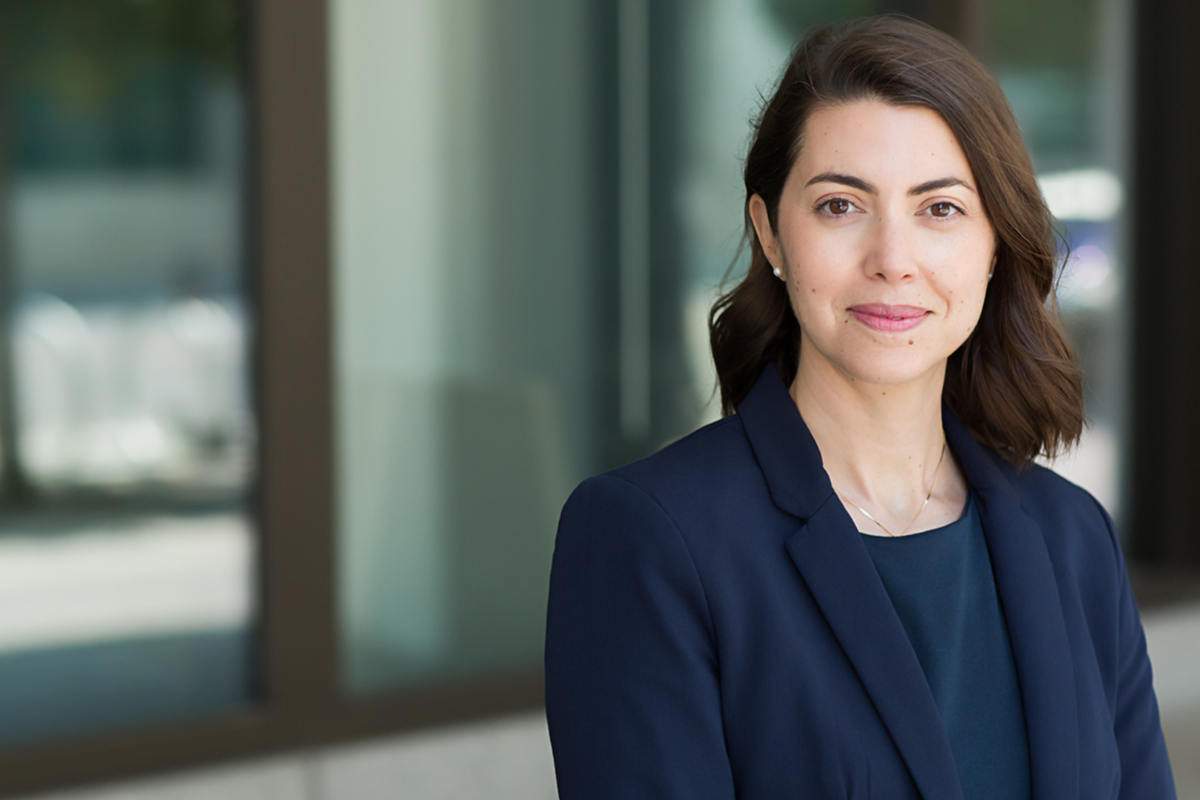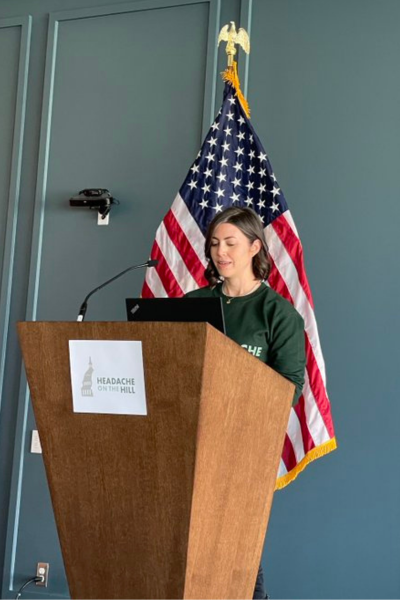
Alumna Annika Ehrlich, DNP ’23, MS ’14, FNP, is a nurse practitioner at the UCSF Headache Center and a national leader in headache advocacy.
Staying Ahead in Migraine
Headache disorders are the third leading cause of disability worldwide and affect people’s jobs, family life and quality of life. Recurring headaches impact 3.1 billion people globally.
Alumna Annika Ehrlich, DNP ’23, MS ’14, FNP, is a nurse practitioner at the UCSF Headache Center and a national leader in headache advocacy. She was recently appointed president of the board of directors for the Alliance for Headache Disorders Advocacy (AHDA) – the first nurse to serve in this role.
How did you get involved in headache advocacy?
I began having migraine attacks in college. Eventually, I had one that was so severe I ended up in the emergency room. After ruling out other factors, I started preventative migraine therapies and my symptoms improved. It took me a while to accept that my diagnosis was migraine and not a symptom of another underlying condition — a common experience for many patients.
After earning my master’s degree from the UCSF School of Nursing, I joined the UCSF Headache Center, the first center of its kind on the West Coast, which provides comprehensive care to relieve the most debilitating headaches.
I’m proud of the care we offer at the center, but sadly there are very few places in the United States that do what we do. In fact, the U.S. has only about 750 certified headache specialists. Meanwhile, one in every six Americans is impacted by headache disorders. I became involved in headache advocacy to address this disparity.
How prevalent are headache disorders?
Headaches are estimated to affect about 40% of the global population. It’s one of the top 10 reasons for a visit to primary care and top five reasons to visit the emergency department. Yet there’s a lot of misinformation about headaches among providers and the public, and more generally, a lack of education. Funding for headache disorder research is extremely low when compared to other disorders affecting a similar magnitude of patients and causing similar disability.
What do you wish more people knew about headache disorders?
Most are “primary headaches,” meaning the headache type is not a symptom of an underlying condition; it is the diagnosis. Common examples are migraine, cluster and tension type.
This can be difficult for patients to reconcile because there is not a diagnostic finding we can point to and say, “This is causing the headache.” Instead, we work to rule out possible secondary causes of symptoms, and the headache features and history lead us to the diagnosis.
In headache, we tend to focus on migraine due to its disabling nature and because it affects up to 39 million Americans. Migraine is much more than “just a headache” – it is a neurologic condition that can include cognitive, motor, sensory and other symptoms.
What can be done to improve care for those living with headache disorders?
I think about recommendations in two categories:
- Education for the public, patients and providers: There is stigma associated with headache disorders. We need to raise awareness about their debilitating impact and provide appropriate education for patients, caregivers and health care professionals.
- Public policies: We need to advocate for public policies that support those living with headache disorders. For example, the AHDA focuses on federal policies that impact our patients and the headache field. This includes advocating for increased research funding and an expanded workforce.
What are some highlights of your advocacy work?
I see how policy impacts patients and the care I provide every day. Engaging in policy work can be so empowering.
For example, the AHDA successfully advocated for the establishment of headache centers of excellence with the Veterans Health Administration. There are now 19 centers across the U.S. Veterans are disproportionally affected by headache disorders due to service-related injuries. This year alone, we helped to ensure congressional funding of up to $24 million for these centers.
The AHDA has also successfully advocated with the Social Security Administration to add headache disorders as a classification, enabling our patients to be eligible for Social Security Disability Insurance.
Last summer, I sat on a panel for the National Academies of Sciences, Engineering, and Medicine, sharing how women are disproportionately affected by migraine. Following that panel, the White House Women’s Health Initiative specifically mentioned migraine as a chronic health condition that needs to be further addressed and funded.
You regularly participate in Headache on the Hill in Washington D.C. Please tell us about this event.
It’s the most influential day of the year in headache advocacy. This annual event held by the AHDA brings clinicians, scientists, patients and caregivers together to advocate for legislation that impacts the headache community. This year, one of our asks was for legislators to co-sponsor the NIH Clinical Trial Diversity Act which seeks to enhance the inclusion of women, racially and ethnically diverse individuals, and people of all ages in NIH-funded trials. We know that headache disorders affect populations differently. More diversity in clinical data is key to helping us best care for our patients.
What is your advice for nurses who want to get started in advocacy work?
Think about the policies that impact your practice and join committees within your organization that are addressing those issues.
Involvement in local, state or national nursing organizations is very rewarding. Attend conferences, engage in letter writing and call your representatives when policies impact your practice.
Consider taking classes in health policy. While earning my master’s and doctorate at the UCSF School of Nursing, I found the health policy courses to be exceptional in helping me further understand how to navigate the legislative process.
Advocacy, particularly patient advocacy, is at the core of nursing. Fight for a place at the decision-making table. Your perspective and voice are so important.




